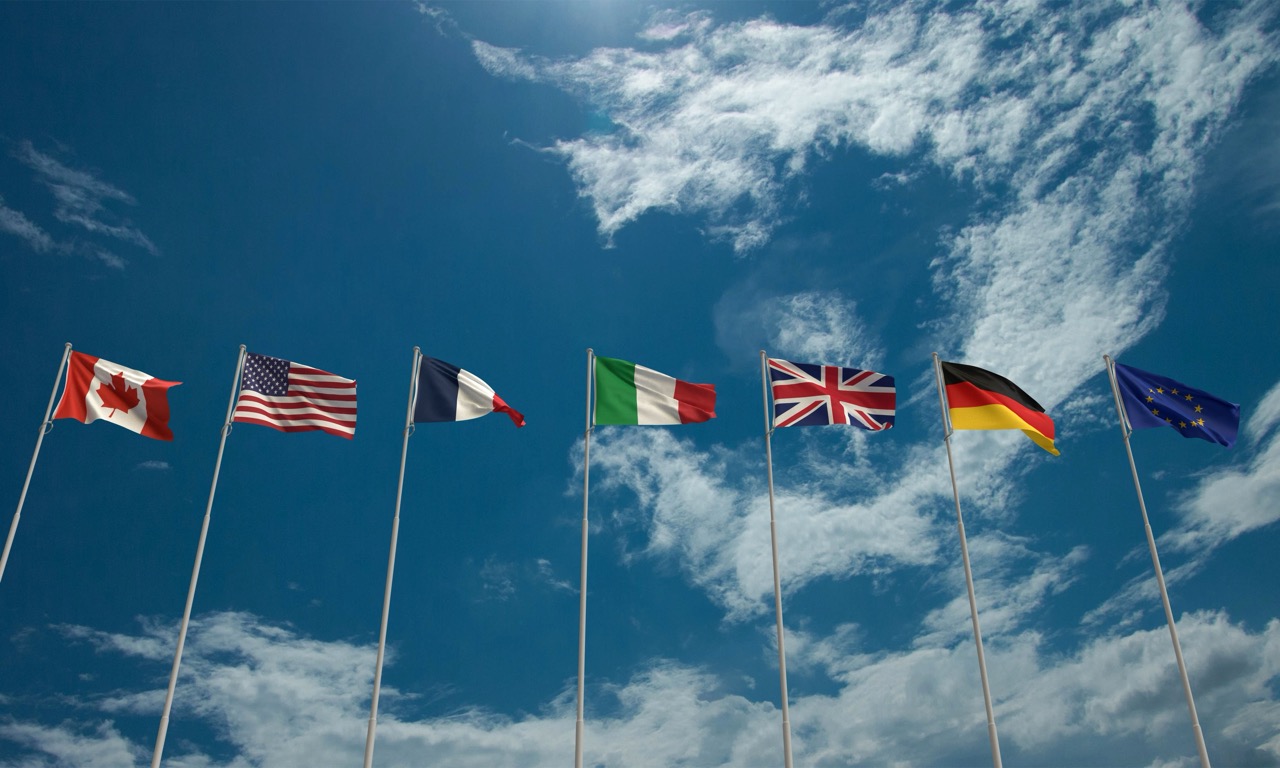Confronting the US-China split in the world trading system
Trade and investment relations among the three great commercial powers – the European Union, the United States and China – remain regulated by the World Trade Organization (WTO). However, the United States has sidelined the WTO rulebook as it aggressively pursues bilateral negotiations with China.
At the G7’s Charlevoix Summit on 8–9 June 2018, leaders should confront the prospect that the ties of the WTO, as among the three great powers, are near breaking point. Conflicts are centred in US-China relations, but the EU is more than a bystander. Erupting frictions between the United States and China will likely affect the commerce of not only Europe but also many other countries.
The United States harbours four large grievances with the way China manages its domestic economy and external commercial relations:
- China’s large current account surplus with the world, and its bilateral surplus with the
United States; - China’s practice of forced technology transfer, through mandatory joint ventures and
other measures; - China’s support of state-owned enterprises (SOEs) through monopoly privileges and opaque subsidies; and,
- China’s ‘great digital wall’ that excludes foreign content and compels localisation of servers and digital analysis.
Apart from the current account surplus issue, the EU shares these grievances, although with less intensity. Sceptical of WTO rules, the Trump administration has turned to self-help.
Reactions and threats
When US trade representative Robert Lighthizer issued his investigation of Chinese technology acquisition practices in March 2018, US president Donald Trump announced tariffs of 25% on $50 billion of imports from China. When China promised to reciprocate, Trump threatened tariffs on an additional $100 billion of Chinese imports.
With the president’s blessing, Congress is drafting legislation that will enlarge the mandate of the Committee on Foreign Investment in the US to screen outward investment and technology transfers to adversary countries, notably China, to ward off diminished US superiority in critical technologies. An enthusiastic Trump has already implemented some of the provisions by executive order.
Finally, in anti-dumping and countervailing duty cases, the US Commerce Department, led by Wilbur Ross, will gladly use ‘best information available’ to support dumping and subsidy cases against Chinese SOEs.
Meanwhile, the strong US economy presages a widening current account deficit with the world and a growing bilateral deficit with China. In 2019, drawing on existing statutes, Trump might further restrict imports from China and other countries without new legislation from Congress.
China objects to US measures, but the prospects for WTO adjudication are dim. Other WTO members have refused to negotiate US grievances over the functioning of the Appellate Body, and consequently the United States is blocking new appointments. By the end of 2019, the Appellate Body will likely not have sufficient members, which will effectively close the dispute settlement system. WTO mechanisms for resolving commercial disputes between members, including between great powers, will then cease to function.
Easing the strain
How can the G7 at Charlevoix take the edge off such looming tensions?
First, other G7 members should make a gallant effort to persuade the United States that restricting imports product by product or country by country will not meaningfully reduce its global trade deficit. However, exchange rate changes can help: other G7 members should welcome a weaker dollar, measured on a trade-weighted basis, so long as the global US trade deficit exceeds 3% of gross domestic product. The same forbearance could apply, in future, to other G7 members with outsized trade deficits.
Second, the G7 could recommend the WTO launch negotiations to address US grievances with the Appellate Body. Conditioned on progress at the negotiating table, the United States could assent to the appointment of new Appellate Body members.
Third, the G7 could call for fresh WTO negotiations that establish rules for SOEs, digital commerce and intellectual property. Chapters of the new Comprehensive and Progressive Trans-Pacific Partnership provide good models. With just a few modifications, the rules could be embraced by the entire WTO membership.
These ambitious understandings would not, however, resolve thorny issues regarding technology. Democrats and Republicans insist that the United States must retain superiority in military equipment and ‘critical technologies’ – software, computer chips, new materials, robotics, biotech, artificial intelligence and more. In China, president Xi Jinping and his Chinese Communist Party leaders equally insist that China must achieve technological parity with the United States. Nothing the G7 does can smooth over this irreconcilable difference. But if the G7 makes incremental progress on lesser but still difficult issues, perhaps technology frictions can be postponed to another day.











